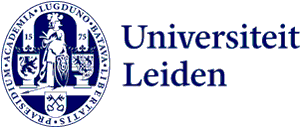
Local Panama communities work with archaeologists on historic land rights
The question of land property titles is a common source of conflict between indigenous communities and federal authorities all over the Americas. A new Panamanian law have led indigenous communities to reach out to archaeologist Dr Natalia Donner. A grant from the Centre for Indigenous American Studies (CIAS) will help her work on the ensuing, unique, heritage project. ‘This is a box I have always wanted to check!’

Historic occupation
Natalia Donner has been conducting archaeological research in the province of Darien (Panama) for the last couple of years. Large areas of this province have been declared as National Parks, limiting the options of land sovereignty for indigenous communities who inhabit the area. ‘The land is in the hands of the national government,’ Donner explains. ‘My team and I established a collaboration with an ecologist who works with local communities. She told us about the new regulations related to protected areas. In this law is stated that if indigenous communities can prove historic occupation, they will gain the property of the land, as long as it will be sustainably maintained.’
This is where archaeology comes in. ‘Following this law, a local community invited us to come and work on a collaborative research project. Usually, we western archaeologists barge in with our own agenda and then we collaborate with locals, but this is the other way around now!’ She grins. ‘This is a box I have always wanted to check!’
Collaborative mapping
And it is collaborative in the full sense. ‘While it is complex and against the national heritage laws to go there and train the local community on how to excavate a site, we are training them to visually record them with photographs and include them in their legal claims. Together, we will be able to add the archaeological layer to their ongoing collaborative mapping endeavors.’
Donner also employs her background in ethnographic filmmaking. ‘We are sharing with them audiovisual techniques, so they can capture their views and perspectives, as well as share in their own language their experiences working with archaeological heritage.’ These videos will be posted to YouTube, inspiring other communities who speak the same language to follow in their tracks.

Giving back
The project makes an interesting case-study on cultural heritage. ‘For years archaeologists and the national government have been seen as the entities who take away heritage.’ Donner elaborates. ‘Large stone sculptures have been taken away from the communities in order to protect them from theft or destruction’. These monuments were later stored in depots in Panama City. Now, finally, archaeologists may be able to give something back to the communities, in the form of land rights. The question about the inequalities pertaining land and cultural heritage rights of indigenous peoples, however, is something that we need to critically examine and consult with the communities to understand which direction we should take.'
Ethics
The launch of the project now has been hampered by the pandemic. ‘We are facing an ethical problem. Even though we could find a way to go physically, how ethical is it to visit an area in which health care facilities are extremely limited?’ Doing it remotely is hardly an option. ‘They are literally in the middle of the tropical forest. They do have cell phones, but mobile internet reception is quite elusive. We won’t go until we are vaccinated, and we are sure that we cannot spread the virus.’
